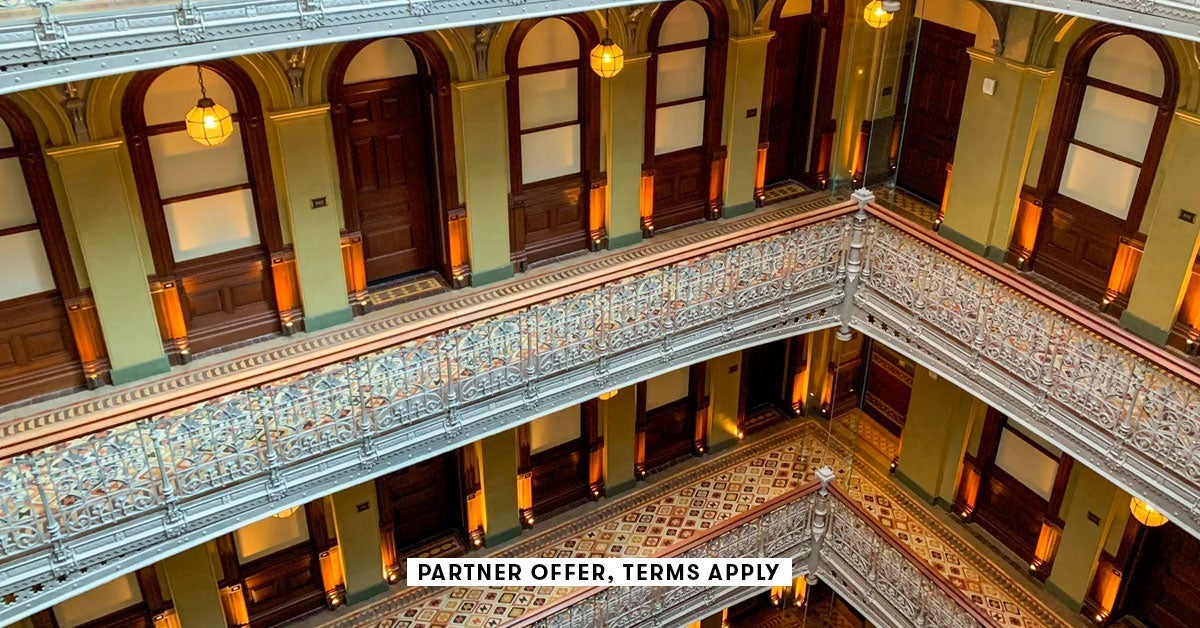Some towns are shaped by industry, others by geography. Ashby de la Zouch, however, owes a remarkable chapter of its history to the power of a single story.
In the early 19th century, a work of historical fiction so completely captured the public imagination that it physically reshaped the town, creating a new economy and leaving behind an architectural legacy that defines it to this day.
This is the story of how Sir Walter Scott’s Ivanhoe transformed a quiet market town into a fashionable spa destination.

The Ivanhoe Effect
In 1819, the Scottish novelist Sir Walter Scott published Ivanhoe, a swashbuckling romance set in 12th-century England. The novel was a runaway bestseller, a cultural phenomenon that defined the genre.
Crucially for Ashby, Scott chose its ruined castle as the setting for a magnificent and pivotal tournament scene.
The effect was immediate and profound. The novel created a sensation, and Regency-era tourists, swept up in the romance of chivalrous knights and damsels in distress, began flocking to the Leicestershire town to see the real-life setting of the story that had enchanted them.
This literary pilgrimage was the birth of Ashby’s tourism industry, a boom created not by royal decree or natural wonder, but by the ink of a novelist’s pen.

A Fortunate Discovery
As fate would have it, this sudden influx of visitors coincided with a discovery made a few miles away. In 1805, miners working at a colliery in the village of Moira had unearthed a copious natural saline spring.
The water was believed to have curative properties, and a small bath house was initially built on-site.
However, the owner of the mines, Lord Francis Rawdon Hastings, had grander ambitions. He recognised that wealthy, fashionable people were unlikely to travel to a mining village for their health.
But the newly famous, romantic town of Ashby de la Zouch? That was a different proposition entirely.
The decision was made to transport the brine waters from Moira to Ashby, first by canal and later by horse-drawn railway.
Building a Regency Resort
With a supply of “healing” water and a ready-made marketing story, the town set about reinventing itself. In 1822, funded by Francis Rawdon Hastings and the town itself, the magnificent Ivanhoe Baths were constructed.
It was a grand, Neo-Grecian building with an imposing 200-foot Doric façade, designed to impress.

The name was no accident; it was a deliberate and brilliant move to cash in on the town’s literary fame.
The building was a hub of genteel society, containing various baths, a pump room, billiard rooms, and a grand saloon under a huge dome.
To accommodate the spa-goers, elegant new buildings sprang up. The Royal Hotel, originally named the Hastings Hotel, was built in 1826, a fine Georgian building providing luxurious lodging for visitors.
 Rawden Terraces
Rawden TerracesOn Station Road and nearby South Street, classical-style houses known as Rawden Terraces and Ivanhoe Terrace were constructed to house wealthy families for the season.
 Ivanhoe Terrace
Ivanhoe TerraceFor a time, Ashby flourished. The area around the baths was landscaped into fashionable “Pleasure Grounds” for promenading, and the town even gained a theatre and a racecourse.
An Enduring Legacy
Ultimately, Ashby’s time as a top-tier spa was short-lived. As the century wore on, the fashion for seaside resorts grew, and visitor numbers dwindled.
The Ivanhoe Baths fell into decline and, after becoming derelict, the elegant building was finally demolished in 1962.
Until recently you could potentially see the foundation of the ruins of the maginificent baths building. Now, as I write, it is being built over, as developers build town houses where the baths once stood.
If you want to get an idea of how the building looked then you can head across Station Road to the Old Ashby Railway Station, which was built in the same style as Ivanhoe Baths, to make the visit feel seemless in its prime.
 Old Ashby Train Station
Old Ashby Train StationThe train station was closed to passengers in 1964. It is now in private hands and parts used as an office.
Yet, the legacy of that era of Ashby Ivanhoe Spa is written all over the town.
The beautiful Bath Grounds remain a public park, the elegant terraces whisper of a time when a novelist’s imagination brought a whole new world to life in the heart of Leicestershire.
Until very recently the Royal Hotel stood as a landmark, however, it is now covered in scaffolding and being transformed into a new purpose.

Even today, local schools and institutions bear the name Ivanhoe, a permanent tribute to the story that put Ashby on the map.



















 English (US) ·
English (US) ·